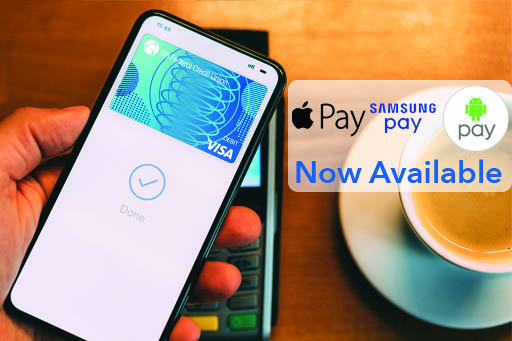
Digital wallets: What are they and how do they work
Seeing people pay with their cellphones or watches has become the new normal. The days of printing out your boarding pass before you check into your flight are now in the past. Digital wallets are a new way to stay organized and safe.
Due to the coronavirus pandemic, digital payment adoption has seen a large increase. Because of its contactless nature, digital wallets have become popular with the number of cashless businesses in the U.S.
What is a digital wallet?
Digital wallets are a digital version of your financial accounts made easily accessible via computer, smartphone or smart device. In other words, this can eliminate the need to carry around your actual wallet and gives you a contingency plan in case you forget your actual wallet.
Currently, ApplePay, Google Pay, and Samsung Pay are three of the most popular digital wallets.
How digital wallets work
Before you get started with a digital wallet, you want to figure out which one you want to use. The device you use will normally dictate which digital wallet you go for. As an example, if you’re an iPhone or Apple Watch user then you’ll probably want to use ApplePay but if you’re an Android user you’ll want to use Google Pay or Samsung Pay.
Click here for instructions on how to add your SRIFCU Visa-branded credit or debit card to the digital wallet of your choice.
In order to make a contactless mobile payment, you simply have to authorize the digital wallet and hold it close enough to the card reader so that your information can be transmitted. Not all retailers accept mobile payments, but you can easily look for the contactless payment indicator on the retailer’s point-of-sale (POS) system or card reader. This symbol looks like a sideways WiFi icon.
What else can digital wallets do?
Digital wallets don’t only make paying for items quick and easy, they also help keep other important documents organized and easily accessible.
Here is a short list of items you can store in a digital wallet to stay organized:
- Credit or debit cards
- Boarding passes
- Hotel reservations
- Airbnb reservations
- Concert tickets
- Gift cards
- Coupons
- Loyalty rewards cards
- Insurance cards
Are digital wallets safe?
A common concern is over safety and security. What happens if your phone gets stolen? Can hackers easily steal your information?
No — digital wallets are actually more secure than your physical cards.
This because mobile payments are heavily encrypted and tokenized, in other words, none of your actual card or account numbers are stored within the digital wallet.
How does that work?
When you add your information to a digital wallet, that information is then converted into a unique code via encryption that can only be accessed by authorized entities. Digital wallets go a step further by also adding in tokenization, which takes that sensitive encrypted data and replaces it with a non-sensitive digital equivalent known as a token. These unique tokens are randomly generated every time a user makes a payment and only the merchant can match this token to accept the payment.
Ultimately, your information is useless and unreadable to fraudsters when encryption and tokenization are used together.
Not only is your information more secure thanks to that technology, but also through user verification. This added layer of security is usually done by fingerprint, facial recognition or PIN.
Bottom line
Digital wallets offer an easy, quick and safe solution for virtual payments, tickets, gift cards and more. While this doesn’t mean you should leave your physical wallet at home, digital wallets and contactless payments will likely see an increase in adoption by U.S. consumers and merchants in the not so distant future.




